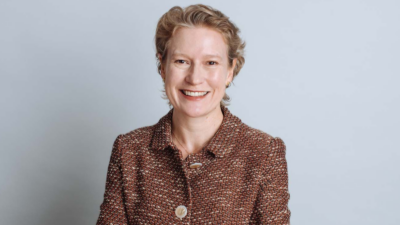Natixis spreads its wings in Australia
(pictured: Kevin Haran)
H2O Asset Management, one of the hedge fund affiliate managers of Natixis Global Asset Management, has won its first global macro mandate in Australia. The mandate is one of several for Natixis to be implemented in the next few months.
The London-based H2O is best known for its unconstrained sovereign bonds and credit capabilities and currently has about $1 billion from Australian clients in those strategies. The global macro mandate is its first for an Australian client that combines equities in a multi-asset strategy.
Kevin Haran, the managing director for Natixis Global Asset Management in Australia and New Zealand, said the firm would soon start managing an additional $1 billion for Australian clients across new global credit and private equity co-investments mandates – adding to its $7.6 billion of Australian-sourced funding.
Natixis Global Asset Management Australia was formed early last year after the Franco-American firm acquired the bulk of the third-party marketing business of Karyn West’s Apostle Funds Management. Apostle previously had the rights to distribute Natixis Global Asset Management’s affiliated managers. The purchase included two Australian-domiciled trusts – Loomis Sayles’ Credit Opportunities Fund, now with about $1.3 billion in assets and a $600 million bank loans fund. Natixis Global Asset Management has 25 affiliated managers and 25 offices around the world, with assets totaling about US$890 billion (as at March 2016). Apostle retained three non Natixis managers from its original business to represent.
Haran runs the sales and client service of the eight-person office in Sydney and was recently joined by the company’s Australian country head and chief operating officer for Asia, Damon Hambly, who moved down from Hong Kong.
One of the issues that multi-affiliate managers find, given inevitably finite sales and marketing resources, is what managers and strategies to promote in Australia and New Zealand ahead of others. Nevertheless, the multi-affiliate structure is popular with investors because of the greater independence of the underlying managers, allowing them to capture the benefits of the boutique effect.
In Natixis’ case, Loomis Sayles is very well known but less-well-known managers which are gaining traction and have sent representatives to Australia at regular intervals include: the ESG-specialist manager Mirova, hedge fund replication pioneer Alpha Simplex Group and H2O.
For Mirova, Haran believes the time is ripe for a new generation of ESG-type investment options for big super funds, to replace the old “ethical funds” which never really took off when they were introduced in the late 1990s. It is now indisputable that the integration of ESG values and processes actually adds value to a portfolio, particularly because of the ‘G’. Issues such as board diversity and independent directors are now commonplace discussions.
Natixis has come up with the notion of “durable portfolio construction” which emphasises risk and the position of each individual client. The firm created a team called “Portfolio Clarity” which consists of about 30 people in various offices who help the clients to pull apart their portfolios to be able to advise them on suitable or better structures.
They carry out about 800 analyses per year for clients ranging from big pension funds through to financial planning groups with model portfolios and high net worth individuals. About 35 per cent of the Natixis global business is retail.
– Greg Bright









